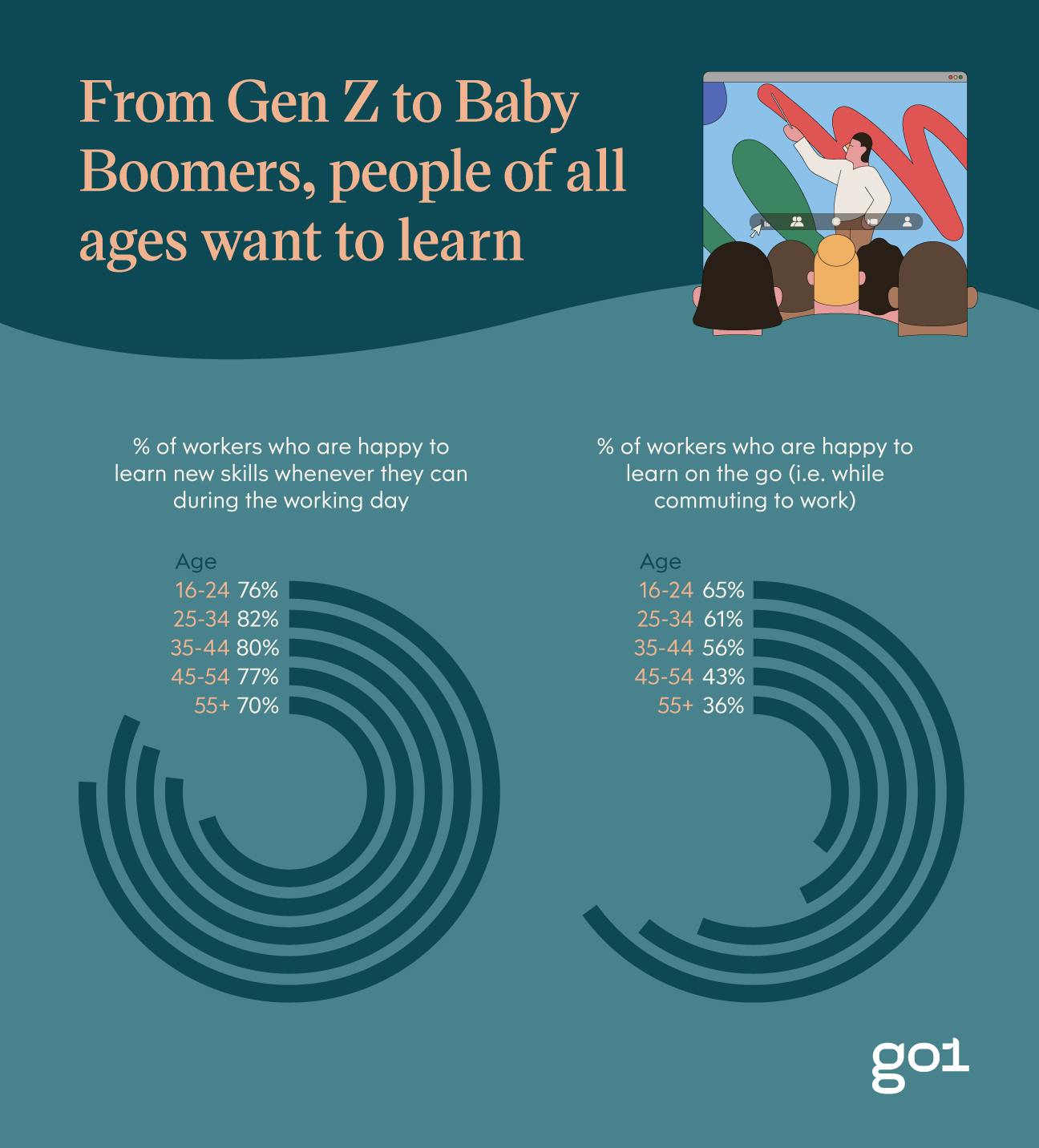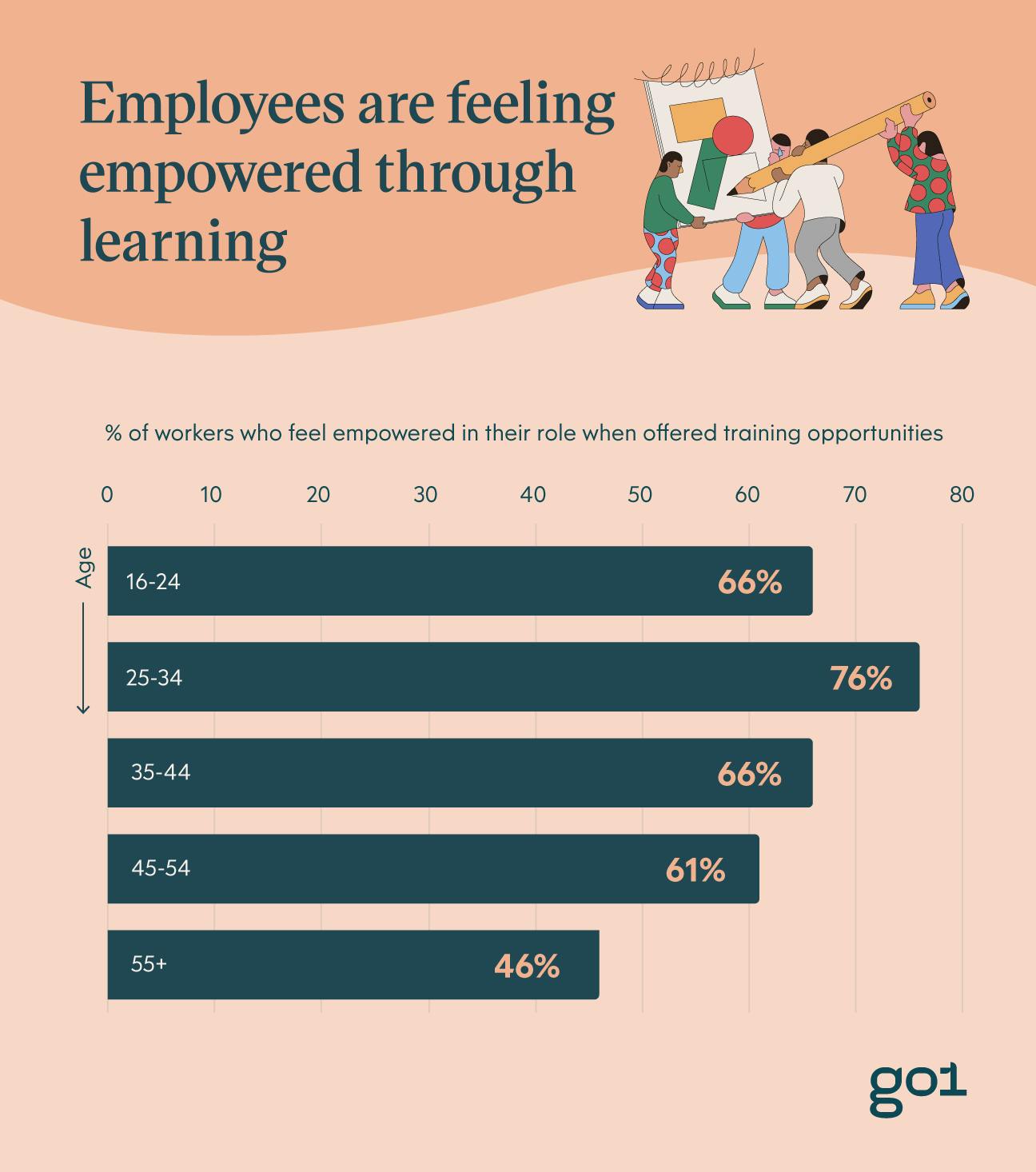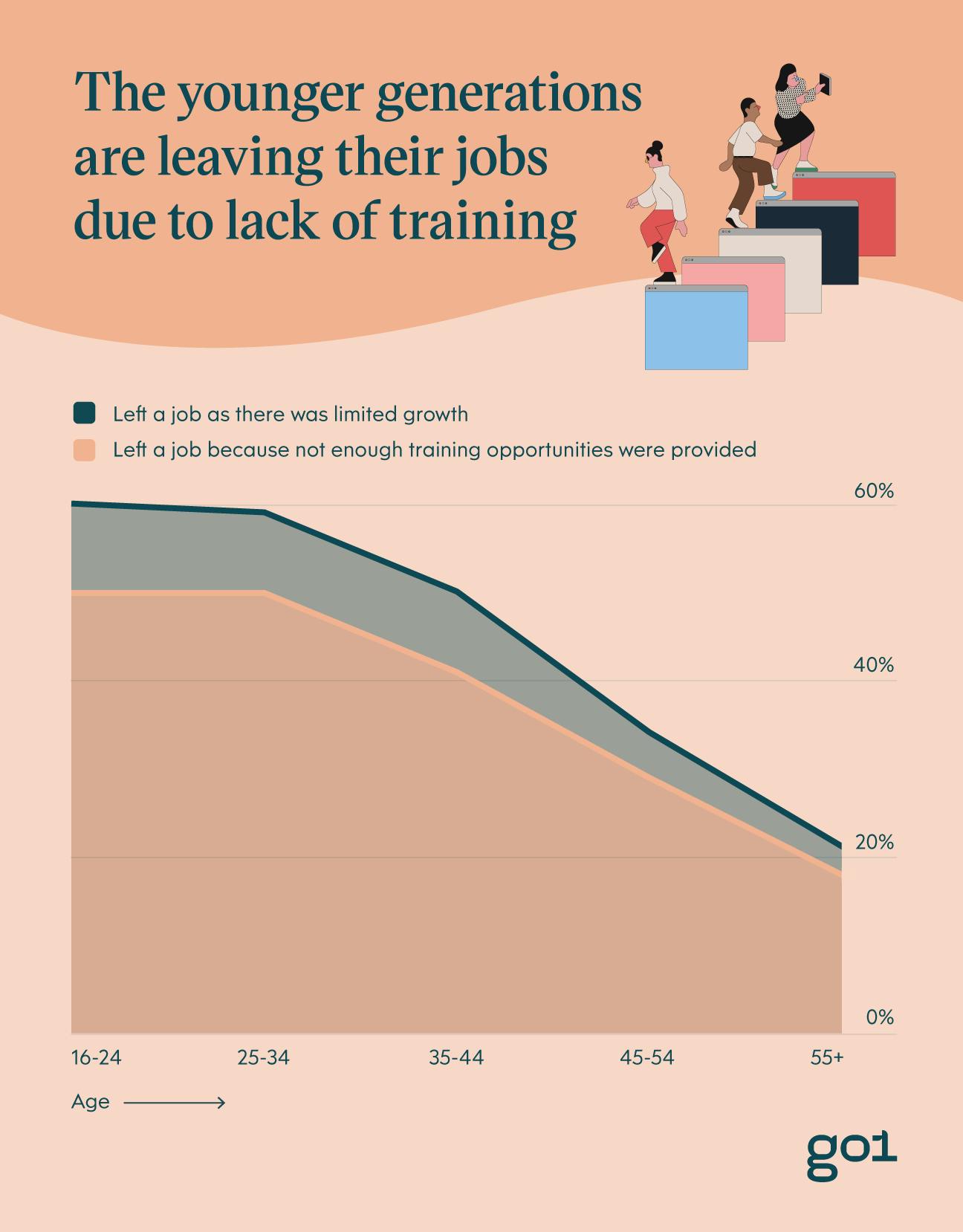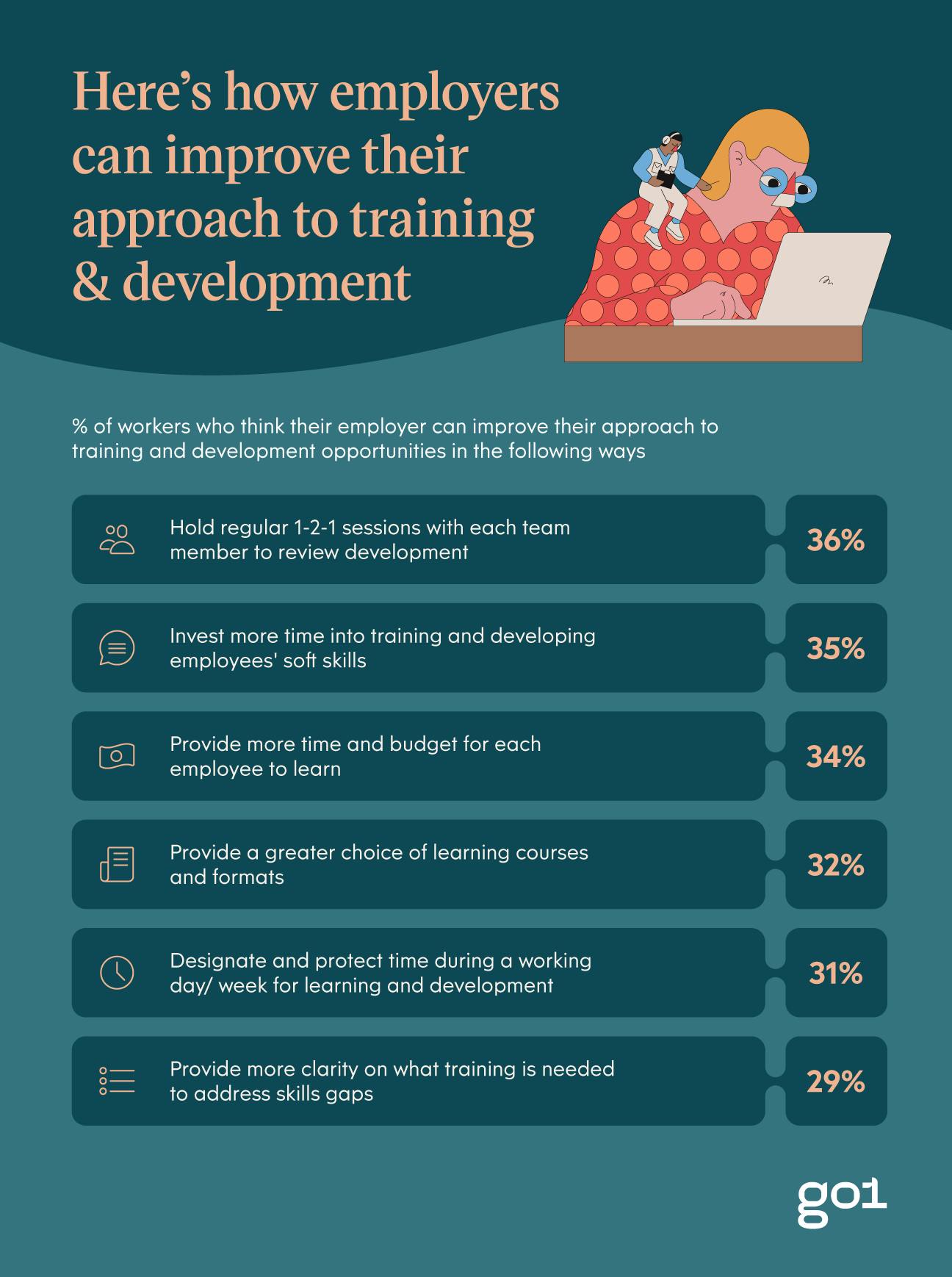
How employees like to learn

Employee training is beneficial for companies of all sizes, but to what extent? According to the Association for Talent Development (ATD), companies that offer extensive training programs have 218% higher income per employee than companies without any formal training. Not only that, a strong training and development program can increase employee retention rates and encourage innovative thinking.
With this in mind, we’ve surveyed employees in the UK to find out exactly how they like to learn to provide HR professionals with true insight into how they can adapt their training programs to fit the needs of their employees.
From Gen Z to Baby Boomers, people of all ages want to learn
Our survey found that people of all ages want to learn. In fact, nearly 4 in 5 (78%) employees are happy to learn new skills whenever they can during the working day. A further 59% are willing to learn outside of work hours to improve their job performance. Although people shouldn’t have to use their spare time to learn, it goes to show how important learning and training opportunities are to employees.
More than 3 in 4 (76%) employees agree that learning during working hours is key to developing their growth and skills, but how do people’s approaches to learning differ with age?

People feel empowered through learning
Our survey found that 65% of employees feel empowered in their role when offered training opportunities. HR and L&D professionals both play a key role in establishing a supportive, empowered environment and should provide employees with the tools, training, and authority they need to excel. See how this feeling of empowerment compares across generations below.

But, not everyone has been given the right training to perform to their potential
Most employees like to feel a sense of pride in their work, do their jobs well, and advance within the company. Without training, it's harder for employees to do this, which may lead to them feeling undervalued and unable to achieve their goals. This can result in a higher employee turnover, as our findings suggest, with nearly 2 in 5 (39%) having left a job because not enough training opportunities were provided.
According to our survey, 38% of employees have not received regular training or development opportunities from their employer and 39% don’t think their performance reviews are effective in helping their development.

The younger generations are leaving their jobs due to a lack of training
Our survey findings show that people want to learn, but they will leave their job if they aren’t getting enough support. This is more apparent in younger employees, with 3 in 5 (60%) of 16-24-year-olds admitting they have left a job due to limited growth opportunities.

Here’s how employers can improve their approach to training and development
Instead of a one-size-fits-all approach, HR professionals and L&D managers should look into personalising training so it’s tailored to each employee’s personal needs and goals.
Our survey found that more than 2 in 5 (42%) of 25-34-year-olds think employers should hold regular one-to-one sessions with each team member to review development, and 37% of employees aged between 35-44 believe employers should provide more time and budget to help them develop their skills.

It's clear from our findings that adults of all ages are eager to learn. And the UK has a workforce that is willing and ready to improve its skills. It’s vital that HR leaders, as well as their employers, adapt their training methods and solutions to best empower their workforce, making skill development more effective and attainable for their employees. It's also now down to employers to take active responsibility in ensuring they retain staff. After all, employees are a company’s biggest asset, and investing in talent is essential to business growth and success.
Keen to elevate your workplace's learning culture? Download our Cultivating Learning eBook developed in partnership with the Emerging Stronger team, thought leaders in the L&D space. You can also book a demo with a Go1 team member to look into how we can adapt to and answer your organization's unique learning needs.
Methodology
Survey data was conducted by Censuswide on behalf of Go1. 2,057 workers (18+) were surveyed between 10.05.22 - 13.05.22. Censuswide abides by and employs members of the Market Research Society which are based on the ESOMAR principles.




